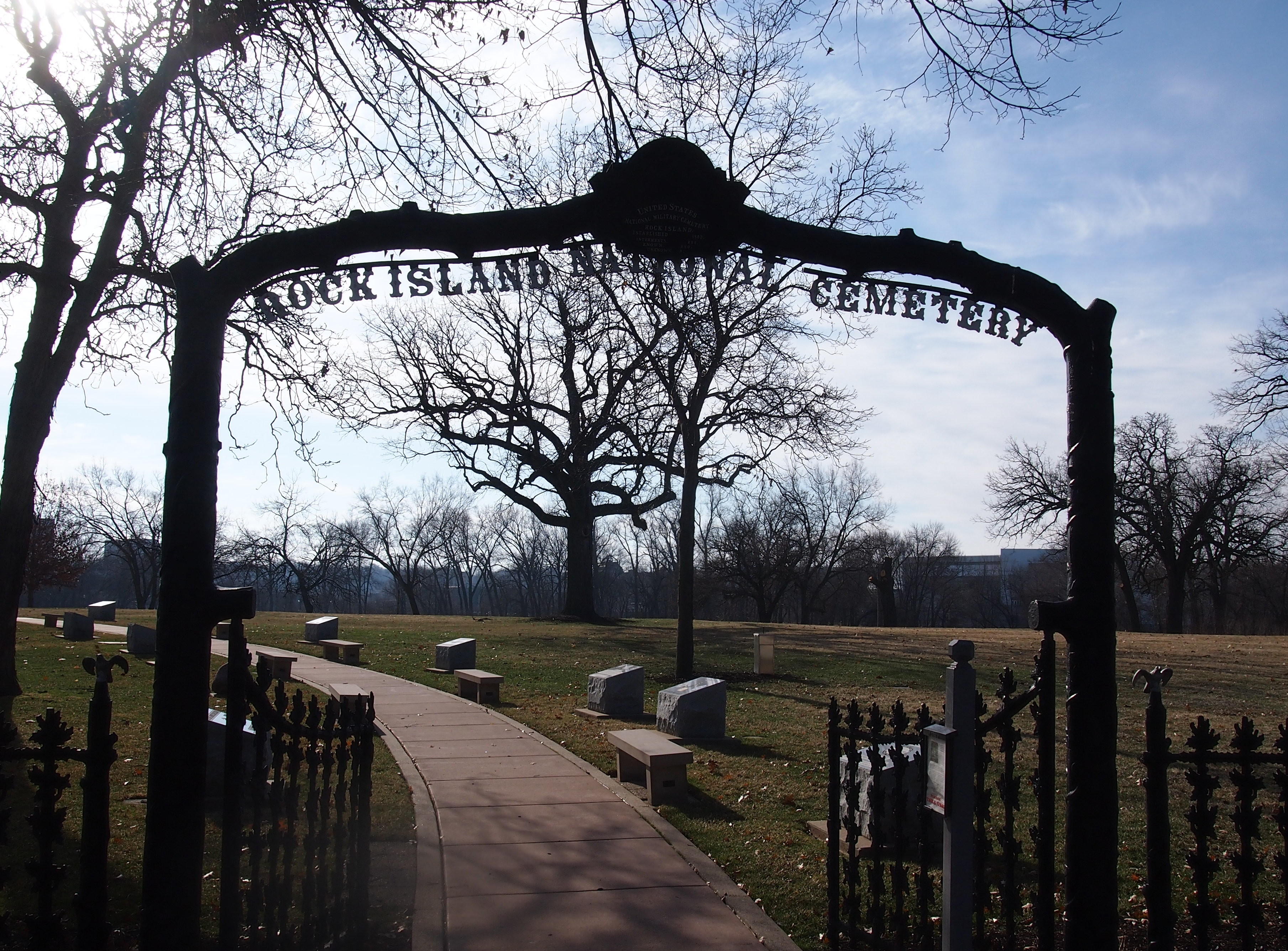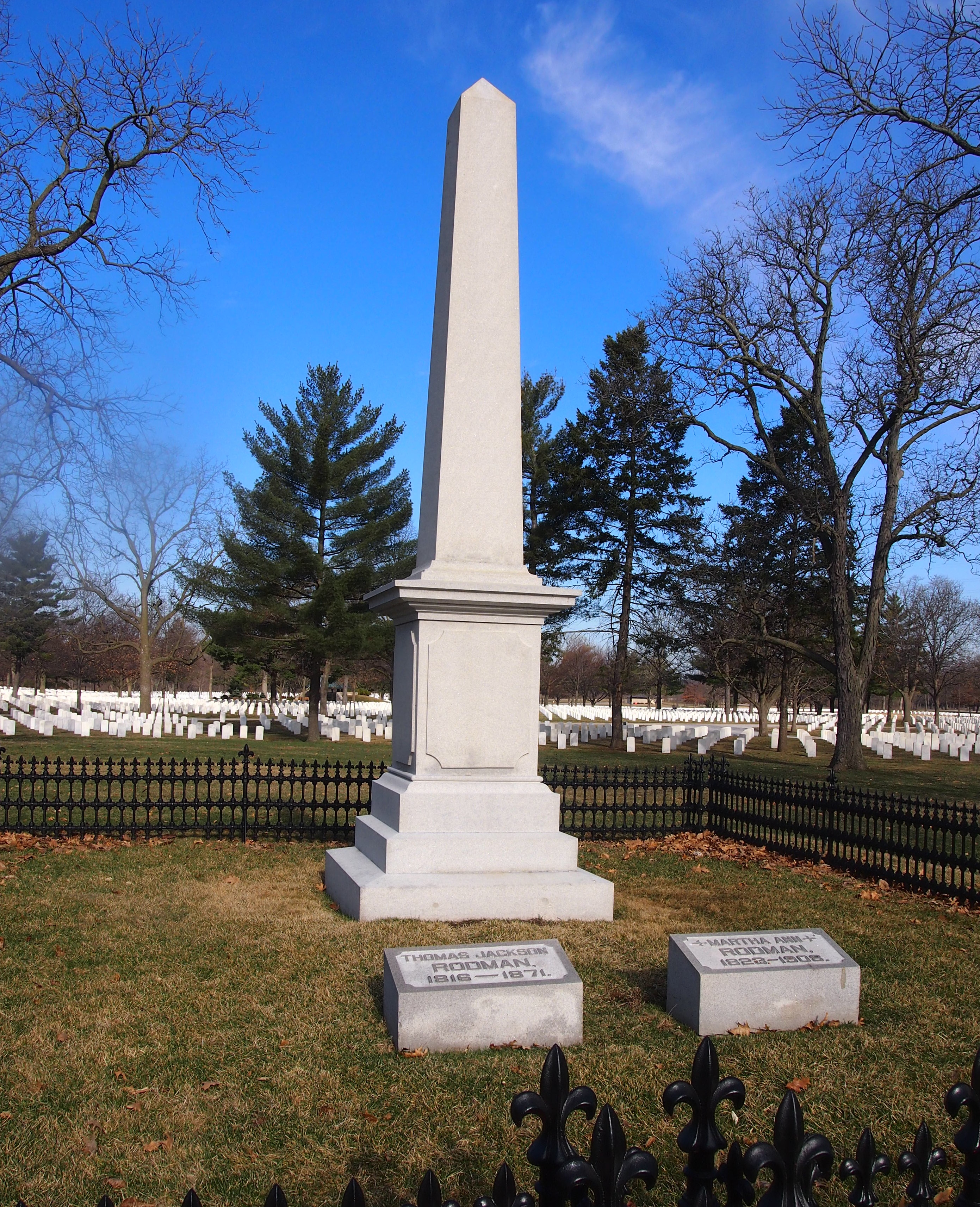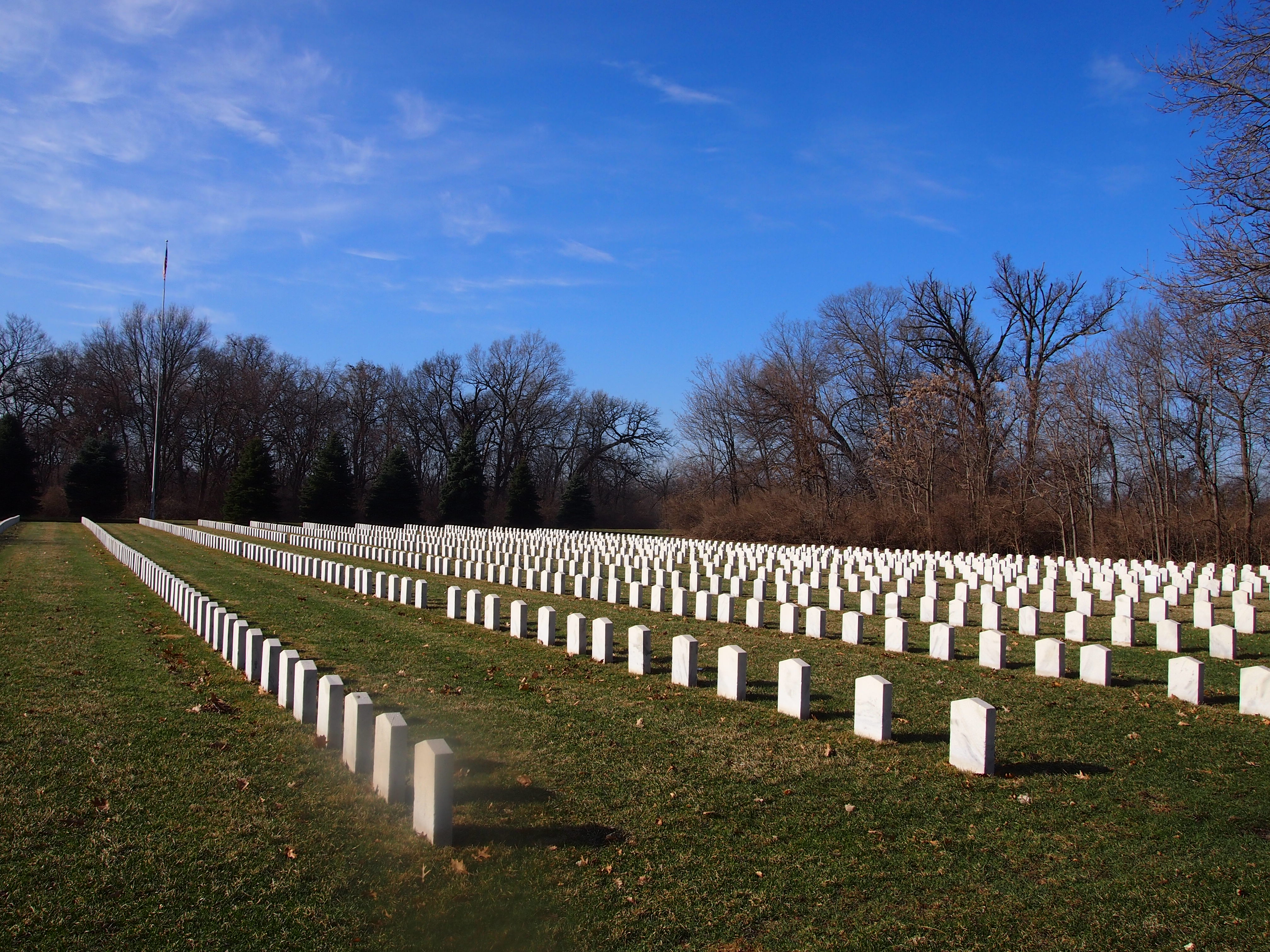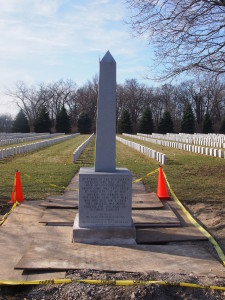These days, visiting the Rock Island National Cemetery means crossing over to Arsenal Island (formerly Rock Island) in the Mississippi River, which is located smack in between all four of the Quad Cities. The island is occupied by a U.S. Army facility, and has been the site of one kind of military installation or another for about two centuries. You pass through a checkpoint where a soldier looks at your driver’s license and asks your business, and then it’s a short drive the cemetery.
It was a quiet place on the morning of March 28, a Saturday. It’s probably quiet most of the time.
 The entrance to the Rock Island National Cemetery used to be marked by this piece of ironwork.
The entrance to the Rock Island National Cemetery used to be marked by this piece of ironwork.
 These days, the historic gate marks the entrance to the cemetery’s Memorial Walkway, which features about 30 memorials to various branches of the armed forces, or groups related to them, such as Pearl Harbor survivors, Mexican War veterans, female veterans, Gold Star Mothers, and local veterans organizations. I was glad to see that the Seabees have a stone there.
These days, the historic gate marks the entrance to the cemetery’s Memorial Walkway, which features about 30 memorials to various branches of the armed forces, or groups related to them, such as Pearl Harbor survivors, Mexican War veterans, female veterans, Gold Star Mothers, and local veterans organizations. I was glad to see that the Seabees have a stone there.
Not that I have a special connection to the Seabees, though I used to work with a fellow who said that his brother, who had died in Vietnam, had been a Seabee. It’s nice to see lesser-known battalions get their due.
The walkway leads to the grave of Thomas J. Rodman and his wife, Martha Ann. The NPS says that “Brigadier General Rodman, the ‘Father of Rock Island Arsenal,’ was an officer during the Civil War and was the arsenal’s commanding officer from 1865 to 1871…
 “Rodman invented the construction method used in producing [Rodman guns], which involved casting the cannon barrels around an air- or water-cooled core, ensuring that the barrel cooled and hardened first. This allowed the cannon to withstand higher pressures, making them stronger, safer, and more reliable, while also greatly increasing the lifespan of the cannon.”
“Rodman invented the construction method used in producing [Rodman guns], which involved casting the cannon barrels around an air- or water-cooled core, ensuring that the barrel cooled and hardened first. This allowed the cannon to withstand higher pressures, making them stronger, safer, and more reliable, while also greatly increasing the lifespan of the cannon.”
Not far from the Rock Island National Cemetery is the Rock Island Confederate Cemetery, “final resting place for nearly 2,000 prisoners of war who died in captivity from disease and the poor living conditions of the camp,” the NPS says.
 It’s a much simpler cemetery, with only one memorial besides the gravestones, a six-foot obelisk erected only in 2003. (Some work around it seems to be under way now.) It says:
It’s a much simpler cemetery, with only one memorial besides the gravestones, a six-foot obelisk erected only in 2003. (Some work around it seems to be under way now.) It says:
 In memory of the Confederate veterans who died at the Rock Island Confederate Prison Camp. May they never be forgotten. Let no man asperse the memory of our sacred dead. They were men who died for a cause they believed was worth fighting for, and made the ultimate sacrifice.
In memory of the Confederate veterans who died at the Rock Island Confederate Prison Camp. May they never be forgotten. Let no man asperse the memory of our sacred dead. They were men who died for a cause they believed was worth fighting for, and made the ultimate sacrifice.
Erected by the Seven Confederate Knights Chapter #2625 and the Daughters of the Confederacy.
The Rock Island prison camp, incidentally, is where Margaret Mitchell put character Ashley Wilkes after his capture in the service of the CSA. So by a peculiar circumstance, he’s better known for being there than any of the actual prisoners.